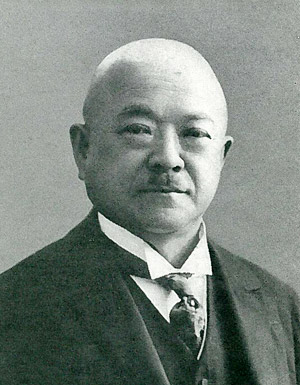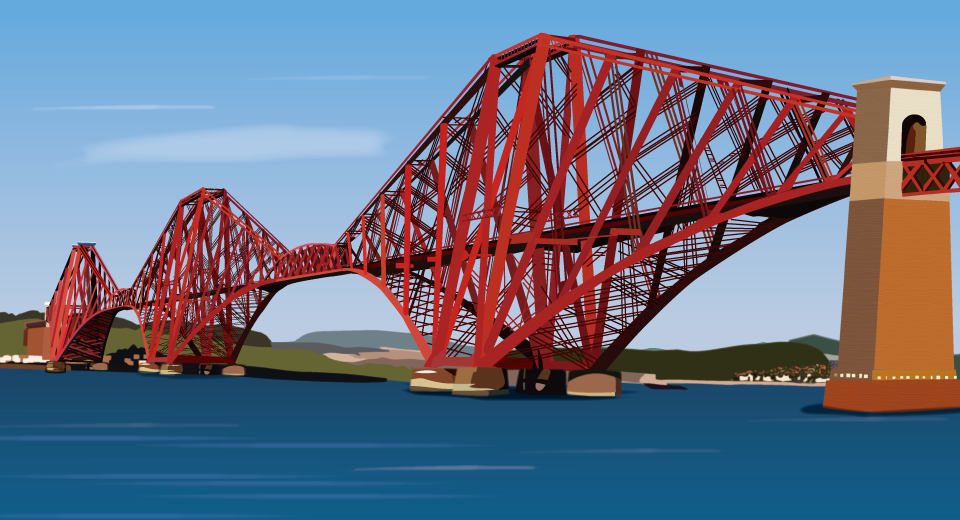Historical Figure
Kaichi Watanabe, Father of Japanese Civil Engineering History
Kaichi Watanabe, seen as one of the fathers of Japanese civil engineering history, was born in Hiraide, Asahi-mura (now Tatsuno-machi), Ina District, Nagano Prefecture, on February 8th, 1858. He studied at Genzo Misawa’s academy from the age of six and was enrolled for one year at Kaichi School in Matsumoto before moving to Tokyo. In 1882, at the age of 24, he became the adopted son of Kinzo Watanabe, governor-general of naval engineering and director of the Yokosuka Shipyard. The next year, Kaichi graduated top of his class at the Imperial College of Engineering Faculty of Civil Engineering (now the Faculty of Engineering at the University of Tokyo), and took a job at the Railway Bureau as an engineer for the Ministry of Engineering. The next year, he resigned from the Ministry and moved to Britain, to study at the University of Glasgow, where he majored in civil engineering. In 1886, aged 28, he graduated from the University of Glasgow as a civil engineer and bachelor of science, while also winning the Walker Prize. In May of that year, he joined Fowler and Baker as an engineering intern, and was later promoted to engineer. He went on to become the construction foreman of the Forth Bridge Company. He was also the surveyor and lead designer for around 12 miles of rail track on both sides of the Forth Bridge.

The Historical Background of the Forth Rail Bridge that Kaichi Worked On
Britain’s industrial revolution began in the second half of the 18th century, leading the world. However, the greatest weakness in Britain’s productive activities was the inconvenience of its transportation, in which road and canal were the only options. At that time, road transport was horse-drawn and time consuming, while the canals were extremely difficult to use, affected by winter freezing and summer droughts, so industry was waiting for a fast, cheap, and safe mode of transport. The invention of the steam engine brought the advent of railways. Bridge engineering improved alongside the development of the railways.
In the golden years of the Victorian era, there was a plan to build giant steel bridges along the East coast of Scotland, from Scottish capital of Edinburgh to the Northeast. There were two inlets on the East coast. One was the Firth of Tay, spanned by the Tay Bridge, and the other was the Firth of Forth. The plan was to build the Forth Bridge across the Firth where it was around 1 km wide.
The lead engineer for that Forth Bridge was Thomas Bouch, who was renowned for his success in building the Tay Bridge, which was completed in 1877. But in 1879, two years after completion, the spans of the Tay Bridge blew away in a gale while a passenger train was crossing. The disaster killed 75 people on the train. Bouch was tormented by the disaster and died broken-hearted 10 months later.
The collapse of the Tay Bridge necessitated rejection of Bouch’s design proposal, and John Fowler and Benjamin Baker were asked to provide a replacement. They were tasked with devising the new design for the Forth Bridge.
Fowler and Baker applied the lessons from the collapse of the Tay Bridge, judging that suspension bridges were vulnerable to wind. They decided on a cantilevered double Warren-type truss as the bridge type, and their design plan was to erect three large steel towers, 105 m tall, one on each side of the Firth of Forth and one on a rock in the middle.
This design plan can be illustrated like this. The steel towers can be likened to three people standing side by side, each with both arms extended. Those “arms” were 207 m long. Even if it is possible to put both ends of the bridge on bridge piers built on land on both banks, the distances between the banks and the central rock were over 500 m, so the “arms” of the parts spanning over the sea would not reach each other. There was a gap of around 100 m left open between them. A 107 m-long truss span was suspended in the middle to link across that gap.
The construction of the Forth Bridge began in 1882. Five years later, in 1887, a demonstration, using human models to illustrate the bridge, was staged at the Royal Institution of Great Britain in front of an audience of researchers, builders, and others. The purpose was to publicize the cantilever structure and help people to understand it. The photograph of that occasion can now be seen in the upper right corner on the back of the 20 Pound note issued by the Bank of Scotland. The middle of the three people is Kaichi.

Why was Kaichi, an Oriental, in the Middle?
One reason, stated in “Crossing the Forth” by Hugh Douglas, is that “to remind all designers of their debt to the Far East”. The cantilever bridge has its roots in the East, and the designers had found that witty way to remind everyone of their debt to the East. The construction was completed in 1890. The spans between the steel towers, where the Forth Bridge crossed the sea, were each of 521 m. With the addition of the smaller linking spans, the length of the whole bridge is 2.5 km.
Kaichi returned to Japan in 1888, two years before the Forth Bridge was completed. At the age of 30, he became chief engineer of the Nippon Doboku Company, and went on contributing to railway construction in the early years of Japan’s Meiji era. After that, he held key positions at Sangu Railway Company, Hokuetsu Railway Company, Keio Electric Railway Company, and elsewhere. While he was a chief engineer at Hokuetsu Railway Company, he invented and patented a locomotive combustion chamber of excellent fuel economy, which could use oil residues. In 1899, he gained the degree of doctor of engineering at the age of 41.
There was one episode that Kaichi had a considerable impact on Japan’s bridge engineering in the second half of the Meiji era. In 1911, Shinpei Goto, a head of the Railway Bureau that time, formed a plan for a rail bridge across the Kanmon Channel. He commissioned the design to Isami Hiroi, a professor at Tokyo Imperial University that time. As a proposal for comparison, he approved the possibility of building a rail tunnel under the Channel. Hiroi surveyed the bridge location in 1912, prepared the bridge design in 1916, and submitted a detailed report to the Railway Bureau. His report stated that the bridge could be a cantilever type, 2,980 ft (908 m) long with the horizontal beams 80 ft apart, to carry multiple broad-gage tracks, for later conversion to standard-gage, multiple electric train tracks, and two aisles 12 ft wide. That was a revolutionary proposal for Japan at that time. The influence of the Forth Bridge can be seen in the design drawings. But the military was strongly opposed to that design proposal. They had the military reason that there was the risk of bombing, but another reason was that Japanese warships bore the Imperial crest of the Chrysanthemum, and it was unacceptable that the common people would be able to look down on warships from on the bridge. That led to the creation of the Kanmon Tunnel.
In 1912, when Kaichi was 54, he took the position of the third president of Tokyo Ishikawajima Shipbuilding & Engineering Co., Ltd. (current IHI), with the strong backing of Eiichi Shibusawa. He served as company president for 13 years, followed by three years from 1925 as an senior adviser. He also participated in the foundation of the Japan Society of Civil Engineers, and served as chair of the Imperial Railway Association, among other positions. He passed away on December 4th, 1932, aged 74.

The Forth Bridge was recognized as a world heritage site in 2015, the 125th year after its completion. Two years later, a new bridge called the Queensferry Crossing was completed across the same Firth of Forth.
That would have been happy news for Kaichi, 85 years after his death. Bridges have history, and they have their places in history.
(Supervising editor: Motohiro Miura)

